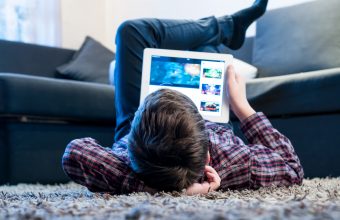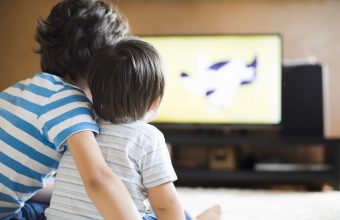There was a moment last year–entire families sequestered away into their own corners of the home, each on their own devices, zooming into digital classrooms and meeting spaces—when it felt like our fate was sealed. Like it or not, digital technology was going to be a major part of our lives going forward for the young and old alike. There was no point in hoping for a screen timeout. This is how we live now, we thought.
I’m happy to report that it doesn’t have to be that way after all.
It’s been picking up steam for years, the incessant march of digital tech into our classrooms. There’s no point holding out for a screen timeout. “Laptops for all!” has been a triumphant cry in school districts that can afford it for over a decade. “It’s the way of the future.” “This how we work now. Kids need to learn how navigate this stuff.” “The earlier, the better.”
And I have hated it.
Long before the pandemic shut my kids out of the classroom for more than a year, I resented the encroachment of digital technology in every aspect of my kids’ lives—but especially in school. I don’t buy into the idea that children need to learn how to use computers in school in order to be able to use them later on in life. We didn’t, after all! The first time one of my kids had to wrestle with putting up a project on Google Slides rather than simply writing a paper or getting up and talking about what they learned, I knew it was over. The worst kind of busy-work invented for corporate middle managers—the redundant, if not fully distracting, Power Point slide—had made it’s way into the classroom. I waved my proverbial white flag.
But when schools did shut down, I suppose I was happy that the kids each had their own school-provided Chromebook. I was grateful that Zoom classes gave them the chance to interact with their teachers in real time. I was glad my eight-year-old knew how to log into her own account and navigate to the sites she needed to use. I have never been a complete luddite when it comes to tech for kids, hoping to limit the time they spend in front of backlit screens rather than reject it outright. I accepted our collective fate even as I quietly mourned a childhood spent firmly in the analog world.
The good news is that I wasn’t the only one who was worried this time. After a year and a half spent entirely behind screens or bouncing back and forth between one lockdown and the next, parents and educators alike have seen the toll that it has taken on our kids.
I spoke with a child psychologist the other day who noted in passing that there have been social deficits directly linked to the pandemic that she is seeing in children. Parents have been finding it even more difficult than usual to pry their kids away from video games and YouTube channels after so much time conditioning their brains to expect constant overstimulation. And data is coming in that supports what many parents have long suspected: social media apps like Instagram are linked to a number of mental health concerns in teens, including increased anxiety, depression, and eating disorders.
But don’t freak out just yet!
A Self-Imposed Screen Timeout?
So far this year, I’ve been seeing a fair amount of pushback against tech by both parents and school alike. My ten-year-old didn’t even open her school Chromebook for the first two weeks of school. My older kids have been working through math problems on paper and reading from actual books. In class, kids are engaged in group work and hands-on projects as much as possible. Even my grade-eight daughter prefers to spend time video chatting with friends on her phone rather than scrolling through social media.
We’re not of the woods entirely, of course. Digital tech isn’t going anywhere no matter how much we sometimes wish we could turn back the hands of time. But I think the pandemic has been a wakeup call for many of us, highlighting how harmful it is when our kids spend more time behind screens than they do engaging with the physical world.
Let’s not forget.
Tagged under: kids and screen time,screen time,screen time rules,screen timeout






